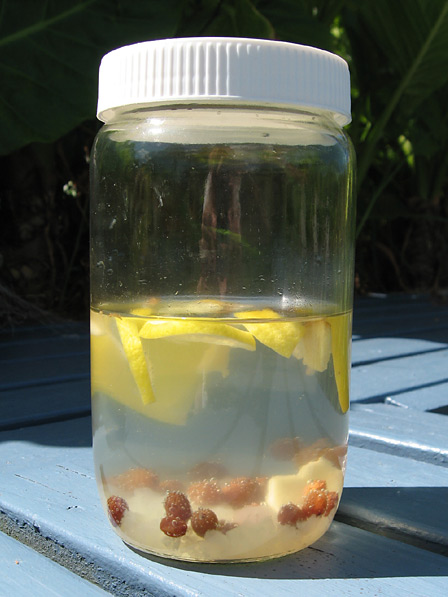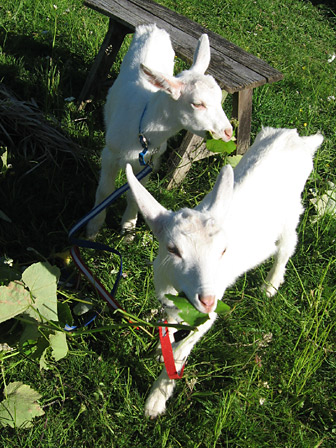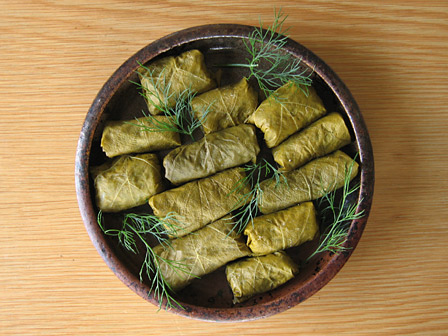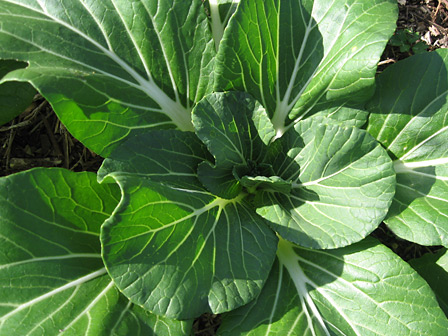In late March last year, very soon after we were married and moved here to the Farmlet, I decided we should make a sourdough starter to mark the beginning of our new life here. I wanted to make a special “Farmlet Sourdough” with wild local yeasts rather than using commercial yeast to get it started. Though I’d heard some reports that trying to catch your own wild yeast could yield less-than-satisfactory results, I felt we had nothing to lose by giving it a go. Of course, there is a lot of advice about making a sourdough starter on the internet. I found this site especially helpful, as it has clear instructions on how to get the starter going. I’m not crazy about his bread recipe, though.

Sourdough crackers
Once our starter began to bubble, I tried to bake a loaf of bread with it. The bread came out with a promising sour smell and taste, but had the consistency of a brick. As a novice, I had obviously tried to use the starter too soon. We tasted (nibbled) the loaf, and Kevin made polite comments about the taste and flavour, while I lamented at having baked a horrible brick. Still, I didn’t give up, and kept hoping that the sourdough would mature enough to raise a loaf properly. Our patience was rewarded a couple of days later when the starter literally started bubbling out of the jar. I tried again to bake a loaf of bread. Success! The sourdough yeast colony was our first “livestock” on the Farmlet; our first “pet.”
In the course of the year, our grain mill arrived, and we were able to start feeding the sourdough with freshly ground wheat. With time, the starter has mellowed and matured, and I’ve continued to refine my sourdough baking techniques. Our starter seems to be reliable and robust, surviving occasional neglect and not getting contaminated by outside organisms. The bread we make is dense and sour, and leaves us feeling nourished in a way that store-bought and commercial-yeast bread never has.
Lately, as per one of our goals for the Year of the Pig, we have tried a number of new sourdough recipes — trying to expand our repertoire beyond the sourdough bread (and occasional sourdough pizza crust) that we enjoy so much. We have now sampled batches of sourdough herb-cheese scones, sourdough crackers, sourdough crumpets, and sourdough pancakes. All were delicious, and look set to become regular fare for us. Kevin says the crumpets are probably his favourite new sourdough treat. The crackers are my pick. I’d like to have some of those in the cupboard at all times. The success of these new recipes is really heartening, since last year I had a couple of less-than-stellar results from sourdough scone and pancake recipes.

Sourdough pizza
All of these new and successful sourdough recipes came from Jessica Prentice’s Full Moon Feast. I love this book! Prentice uses the seasonal rhythms of thirteen lunar cycles as a framework to deliver thirteen chapters of intelligent and thought-provoking insights into our cultural relationship with food. Starting in the dead of winter with the “Hunger Moon,” the book moves through the seasons — “Sap Moon,” “Egg Moon,” “Milk Moon,” “Moon of Making Fat,” — until it ends in winter again with the “Wolf Moon.” Each chapter includes a selection of delicious recipes. (At least, all the recipes we’ve tried so far have been delicious!) The author lives in Northern California, but I’m pleased to say that the recipes seem to contain relatively few ingredients that we couldn’t hope to find here in rural New Zealand. Often the recipes suggest adaptations and alternatives that take into account local variations in ingredients. I really appreciate that. When this book first arrived, I read it from cover to cover. Now we are enjoying it as a recipe book.
If anyone reading this post lives locally and would like some sourdough starter, we’d be more than happy to share it.





